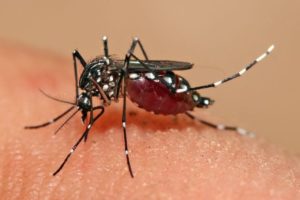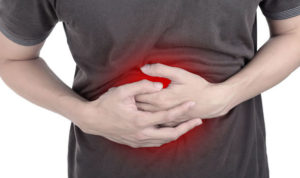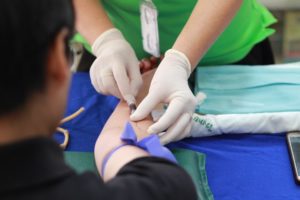 Dengue fever (DF), caused by the mosquito-borne flavivirus, is recognised as one of the world’s biggest emerging pandemics. DF in the Asia Pacific continues to threaten the quality of public health in the region. In 2017, the New Straits Times reported that there were 83,000 cases of dengue fever with 171 deaths reported in Malaysia. However, Malaysia has actually succeeded in reducing the number of dengue cases and deaths for two consecutive years. The nation saw a 16% drop in total cases and 29% fall in deaths in 2016, followed by a 17% reduction in cases and 25% in deaths in 2017.
Dengue fever (DF), caused by the mosquito-borne flavivirus, is recognised as one of the world’s biggest emerging pandemics. DF in the Asia Pacific continues to threaten the quality of public health in the region. In 2017, the New Straits Times reported that there were 83,000 cases of dengue fever with 171 deaths reported in Malaysia. However, Malaysia has actually succeeded in reducing the number of dengue cases and deaths for two consecutive years. The nation saw a 16% drop in total cases and 29% fall in deaths in 2016, followed by a 17% reduction in cases and 25% in deaths in 2017.
DF has a profound effect on multiple organ systems, the commonest being the liver. Liver injury due to dengue viral infection occurs in half of patients with DF. However, before we can attribute the etiology of hepatitis in a patient with DF to the virus itself, we should rule out other etiologies such as medication-induced (i.e. paracetamol), viral hepatitis A/B/C, fatty liver disease (either alcoholic- or non-alcoholic), and septicemia due to hospital-acquired infections. An ultrasound scan is sometimes required to rule out other causes like liver abscess, undiagnosed liver cirrhosis or hepatoma.

Picture source: Daily express
In DF-related hepatitis, the clinical manifestations are either a result of direct viral toxicity or dysregulated immunologic injury in response to the virus. Elevation of aspartate aminotransferase (AST) and alanine aminotransferase (ALT) is prominent in acute dengue illness. The World Health Organization (WHO) 2009 dengue guidelines define AST or ALT ≥ 1000 U/L as a criterion for severe dengue. Deranged liver enzymes are usually in the mild to moderate range and severe hepatitis with transaminases 10 times above the upper limit of normal is less common at 3-11%.
Elevation in AST occurs more often than ALT during the first week of illness and the readings usually decrease to normal levels within three weeks.A Brazilian study found that the liver injury was more common among females. Acute liver injury is a severe complication in DF and predisposes to acute liver failure (ALF), life-threatening hemorrhage, disseminated intravascular coagulation (DIVC) and hepatic encephalopathy.
 According to a cohort study of inpatients with dengue viral infection done at Karachi, India, severe hepatitis (ALT>300IU) in dengue is associated with prolonged hospital stay, mortality, bleeding and renal failure. If we look back at published data from Southeast Asia, Thailand reported up to 50% mortality in the paediatric population with DF and ALF. Tan SS et al reported no mortalities among 8 adult patients with DF and ALF (standard medical therapy) in Malaysia.
According to a cohort study of inpatients with dengue viral infection done at Karachi, India, severe hepatitis (ALT>300IU) in dengue is associated with prolonged hospital stay, mortality, bleeding and renal failure. If we look back at published data from Southeast Asia, Thailand reported up to 50% mortality in the paediatric population with DF and ALF. Tan SS et al reported no mortalities among 8 adult patients with DF and ALF (standard medical therapy) in Malaysia.
How should we treat patients with DF with ALF? Supportive measures remain the mainstay of treatment. Cautious fluid replacement with close monitoring would be the primary management. All hepatotoxic medicine should be avoided if possible. There are a few case series reporting the use of N-acetyl cysteine (NAC). Ursodeoxycholic acid and Heptral have also been reported efficient in bringing down the liver enzymes in individual cases. Singapore reported an intensive care unit case of DF-fulminant liver failure which was managed with molecular adsorbent recirculating system (MARS). MARS led to rapid reversal of biochemical profile and encephalopathy, resulting in early extubation and discharge. Liver transplantation could be a difficult proposition in lieu of hemodynamic instability, bleeding, and organ failure seen during DF infection.
By Dr Chieng Jin Yu, Medical Lecturer, Consultant Gastroenterologist and Hepatologist, Universiti Putra Malaysia (UPM).
References
- De Souza LJ, Nogueira RM, Soares LC (2007) The impact of dengue on liver function as evaluated by aminotransferase levels. Braz J Infect Dis 11: 407-10.
- Kuo CH, Tai DI, Chang Chien CS, Lan CK, Chiou SS, et al. (1992) Liver biochemical tests and dengue fever. Am J Trop Med Hyg 47: 265-270.
[This article belongs to The Malaysian Medical Gazette. Any republication (online or offline) without written permission from The Malaysian Medical Gazette is prohibited.]
